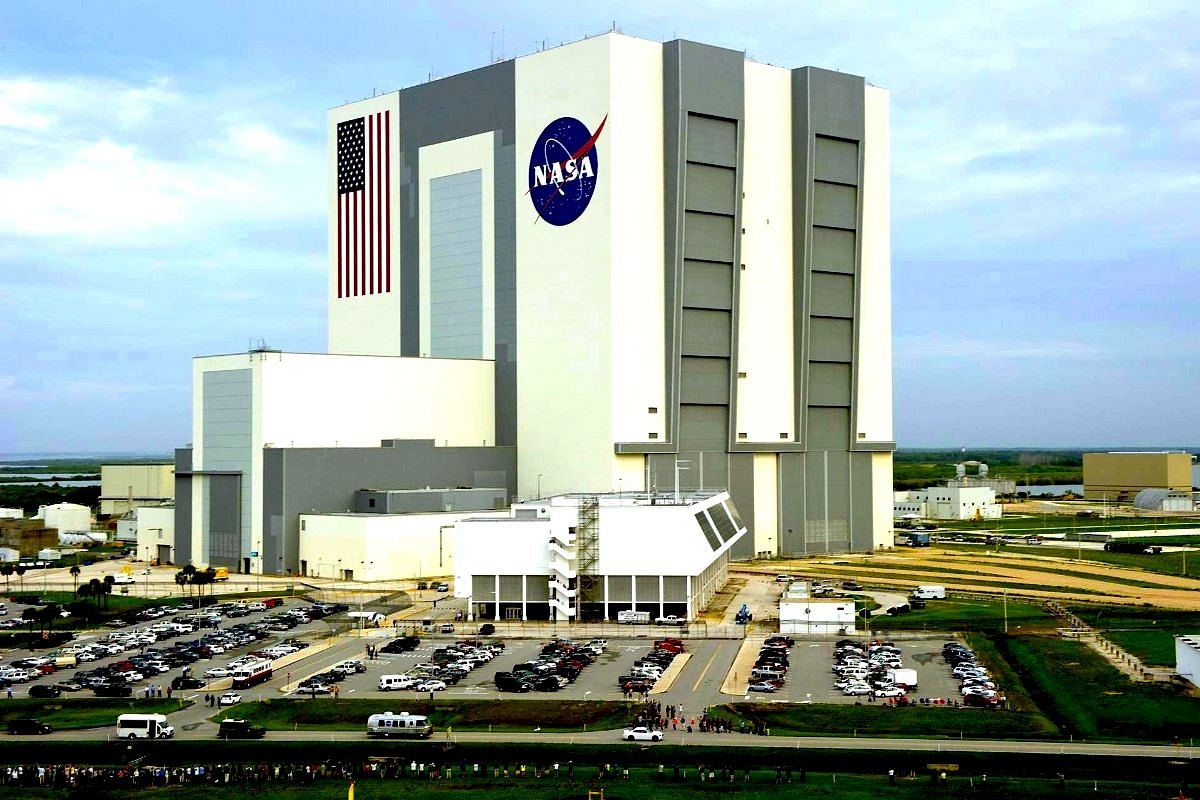News Brief
NASA Pushes Artemis Moon Mission Date Ahead By A Year To 2025; Concedes China Is An Aggressive Competitor
- NASA chief calls China 'aggressive competitor', says 'it's position of NASA and the United States government that we want to be first back on the moon'.

NASA Building (wikipedia)
NASA's target date for returning astronauts to the moon has been pushed back to 2025 at the earliest, according to the space agency's administrator, Bill Nelson.
He attributed the adjustment of the Artemis schedule to a series of events. According to a report by Washington Post, dealing with the coronavirus pandemic, as well as unrealistic budgeting under the Donald Trump administration, were important factors in the delay, Nelson said in a conference call with reporters.
Trump's government had set an ambitious aim of returning humans to the moon's surface by 2024, as part of the Artemis effort, which was meant to be a stepping stone to the even loftier goal of sending astronauts to Mars.
Additionally, Nelson said that the target date has been extended also due to legal fighting over the SpaceX contract to develop the Artemis lunar landing vehicle.
According to the NASA chief, a former astronaut and United States senator appointed by President Joe Biden to lead the space agency: "We lost nearly seven months in litigation, and that likely has pushed the first human landing to no earlier than 2025. We are estimating no earlier than 2025 for Artemis 3, which would be the human lander on the first demonstration landing."
NASA had hoped to return crewed spacecraft to the lunar surface by 2028, After deploying a "Gateway" space station into orbit around the moon by 2024. However, in a surprise announcement in 2019 from then-Vice President Mike Pence, the Trump administration set a goal of five years for placing Americans back on the moon "by any means necessary".
As per the latest reports, Nelson insisted that the United States needed to get to the moon as soon as possible, portraying the programme as a Cold War-style space race pitting America against China rather than the Soviet Union.
China has great space goals, he noted, having landed a rover on Mars and a robotic spacecraft on the far side of the moon. Additionally, the Asian country is also constructing a low-Earth-orbiting space station and planning toward a human landing on the moon.
China's space programme, which has included the robotic study of the lunar surface and Mars, remains a driving force behind the Artemis project, according to Nelson.
He said: "We're going to be as aggressive as we can be in a safe and technically feasible way to beat out competitors with boots on the moon.”
“We have every reason to believe that we have a competitor, a very aggressive competitor, in the Chinese. It’s the position of NASA and, I believe, the United States government that we want to be first back on the moon... And we are getting geared up to go,” he noted.
However, the first Artemis mission, an uncrewed test flight of the Orion capsule and the new heavy-lift Space Launch System (SLS) rocket that will send it aloft, is scheduled to launch in February 2022, according to Nelson's latest timeline.
The first crewed trip of the SLS-Orion spacecraft will take place no later than May 2024, Nelson said adding that it would transport astronauts 40,000 miles beyond the moon—the furthest humans have ever gone—before returning them to Earth.
Moreover, the NASA administrator stated that the first human Artemis landing would be preceded by an uncrewed landing at an undisclosed date. According to NASA, at least one woman will go on the first Artemis crewed moon landing, with a person of colour on either that mission or the following—but it would be a first in both cases.
Support Swarajya's 50 Ground Reports Project & Sponsor A Story
Every general election Swarajya does a 50 ground reports project.
Aimed only at serious readers and those who appreciate the nuances of political undercurrents, the project provides a sense of India's electoral landscape. As you know, these reports are produced after considerable investment of travel, time and effort on the ground.
This time too we've kicked off the project in style and have covered over 30 constituencies already. If you're someone who appreciates such work and have enjoyed our coverage please consider sponsoring a ground report for just Rs 2999 to Rs 19,999 - it goes a long way in helping us produce more quality reportage.
You can also back this project by becoming a subscriber for as little as Rs 999 - so do click on this links and choose a plan that suits you and back us.
Click below to contribute.
Latest